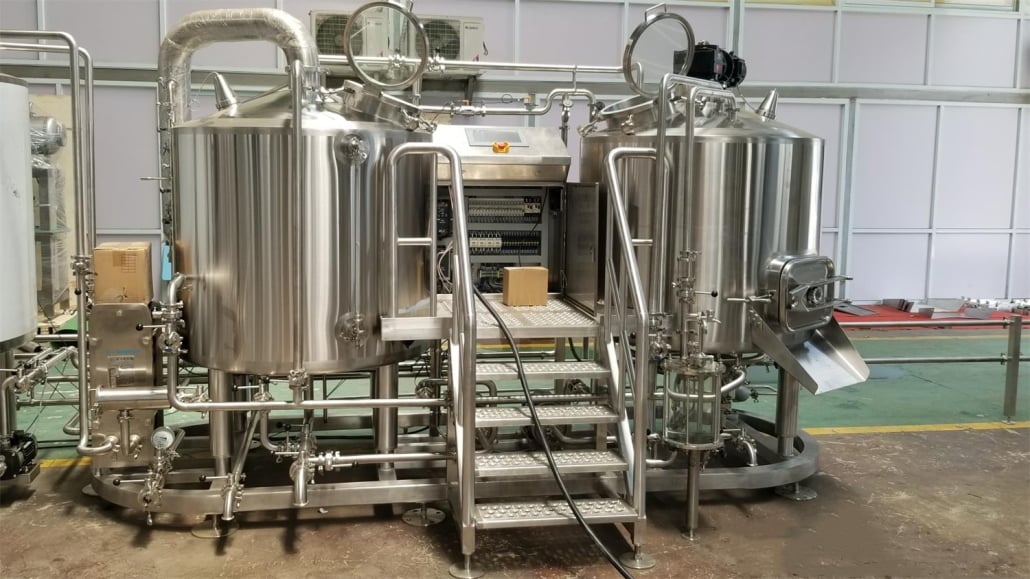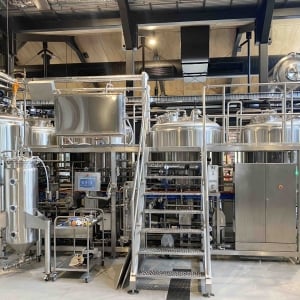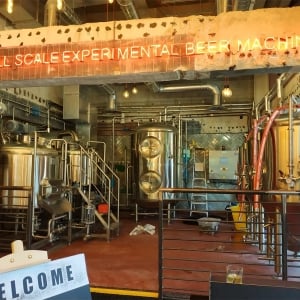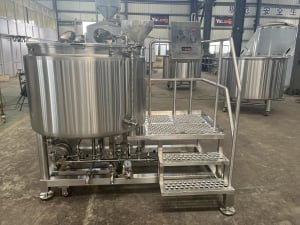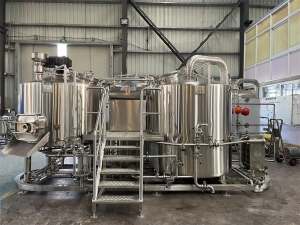Table of Contents
ToggleIntroduction
When it comes to producing beer on a commercial scale, the art of brewing transforms into a complex science. Commercial beer brewing systems are the backbone of the beer industry, enabling breweries to create large quantities of beer while maintaining quality and consistency. In this article, we’ll dive deep into the world of commercial beer brewing systems, exploring their types, key components, brewing process, selection criteria, installation, maintenance, advantages, challenges, sustainability, and future trends.
What are Commercial Beer Brewing Systems?
Commercial beer brewing systems are advanced setups designed to brew beer in large quantities for commercial purposes. Unlike homebrewing kits, these systems are equipped with sophisticated technology and high-capacity vessels to handle significant production volumes. From brewpubs and microbreweries to craft breweries and large industrial facilities, various establishments rely on these systems to meet the demands of beer enthusiasts worldwide.
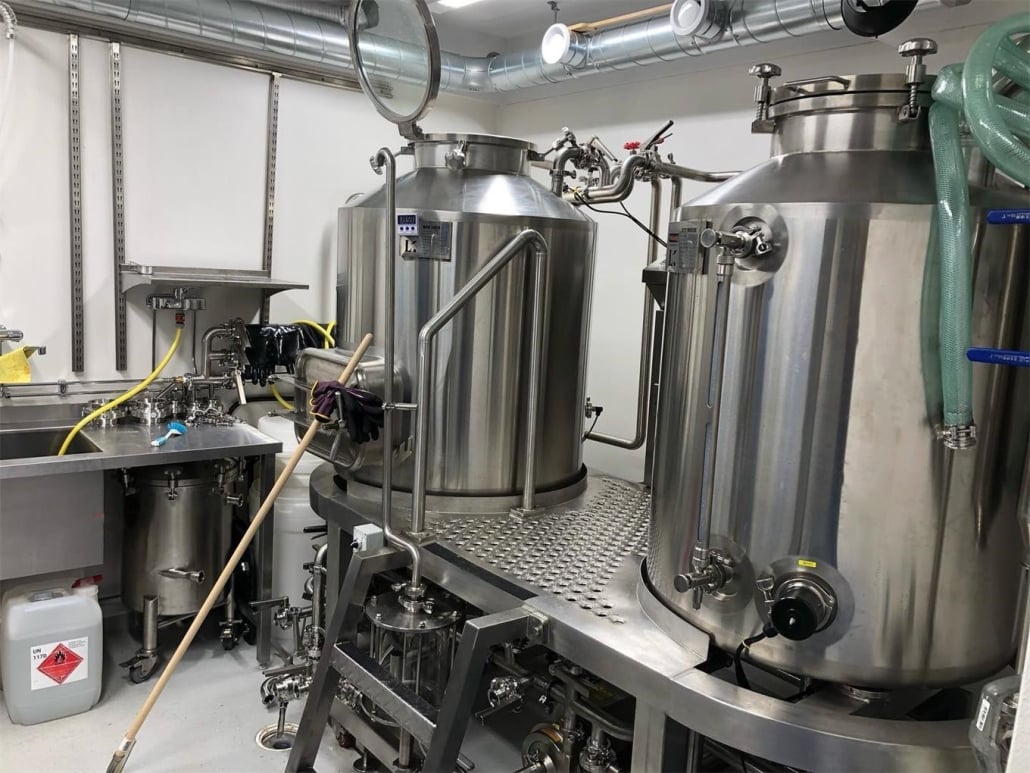
Types of Commercial Beer Brewing Systems
Brewpub Systems
Brewpub systems are compact brewing setups primarily used within the premises of restaurants or pubs. They allow these establishments to offer their own freshly brewed beer, adding a unique touch to their culinary experience.
Microbrewery Systems
Microbrewery systems are small-scale setups with more extensive capabilities than brewpub systems. They are dedicated breweries producing craft beer for distribution in local markets.
Craft Brewery Systems
Craft brewery systems are medium-sized setups suitable for producing larger quantities of beer and distributing it across regions or states. They maintain the essence of craft brewing while catering to a broader audience.
Industrial Brewery Systems
Industrial brewery systems are large-scale operations with significant production capabilities. These breweries supply beer on a national or even international scale, making them major players in the beer industry.
Key Components of Commercial Beer Brewing Systems
Mash Tun
The mash tun is a vessel where milled grains are mixed with hot water to convert starches into fermentable sugars.
Brew Kettle
The brew kettle is where the sugary liquid obtained from the mash tun (wort) is boiled, hops are added, and flavors are extracted.
Fermentation Tanks
Fermentation tanks are vessels where yeast is added to the wort to convert sugars into alcohol and carbon dioxide.
Cooling System
The cooling system helps in rapidly cooling the boiled wort before it goes into the fermentation tanks.
Filtration System
The filtration system is used to clarify the beer by removing any remaining solids or impurities.
Control System
The control system automates and regulates various brewing parameters like temperature, pressure, and timings.
Cleaning System
The cleaning system ensures proper sanitation and hygiene of the brewing equipment.
The Brewing Process with Commercial Beer Brewing Systems
Malting
The brewing process begins with malting, where grains like barley are soaked in water and allowed to germinate. The germinated grains are then dried in a kiln to produce malt, which is the foundation of beer flavor.
Mashing
In the mash tun, the malt is mixed with hot water to create a thick mixture known as the “mash.” During this process, enzymes break down the starches into fermentable sugars, creating the wort.
Boiling
The wort is transferred to the brew kettle, where it is boiled. Hops are added during this stage to impart bitterness, aroma, and flavor to the beer.
Fermentation
After boiling, the wort is cooled and transferred to fermentation tanks. Yeast is added to initiate the fermentation process, during which sugars are converted into alcohol and carbon dioxide.
Conditioning
Once fermentation is complete, the beer undergoes a conditioning phase where it matures and develops its flavors.
Packaging
Finally, the beer is filtered, carbonated, and packaged into bottles, cans, or kegs for distribution and consumption.
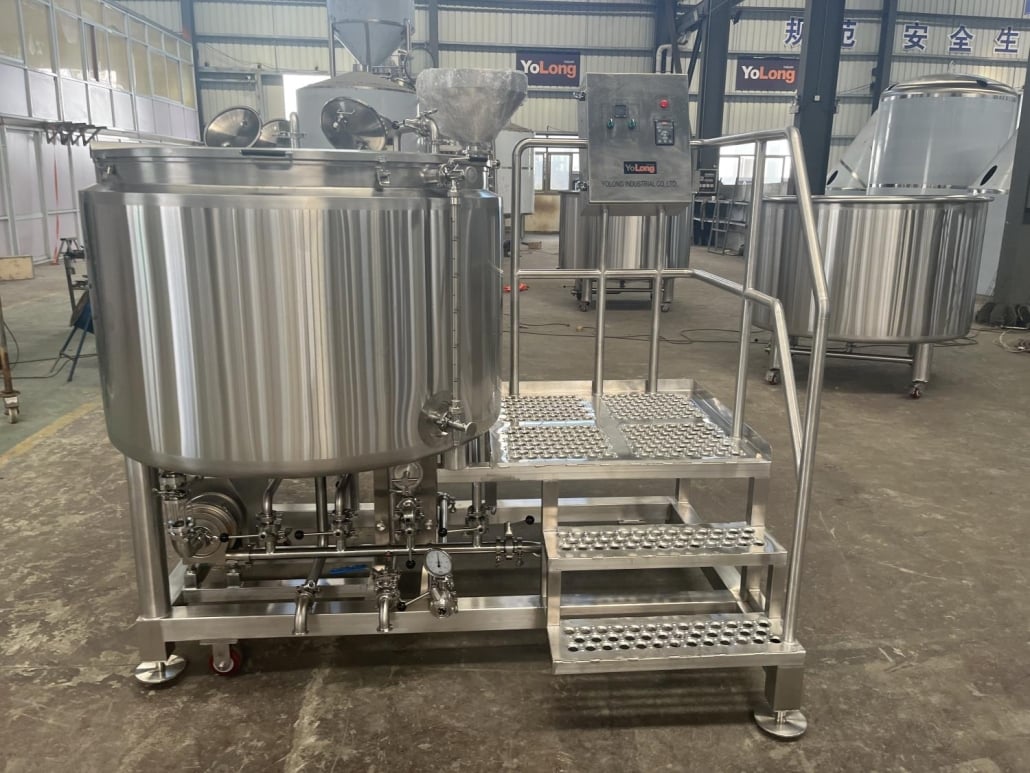
Factors to Consider When Choosing a Commercial Beer Brewing System
Capacity and Production Volume
Selecting a system with the appropriate capacity ensures that production demands are met efficiently.
Space and Layout
The available space and layout of the brewery should be considered to accommodate the chosen system.
Automation and Technology
The level of automation and technology should align with the brewery’s operational capabilities and staff expertise.
Energy Efficiency
Opting for energy-efficient systems can help reduce operational costs and environmental impact.
Quality and Consistency
Ensuring the system maintains the desired quality and consistency of the beer is crucial for brand reputation.
Budget and Cost
The initial investment, ongoing operational costs, and return on investment should be evaluated before making a decision.
Installation and Setup of Commercial Beer Brewing Systems
Location and Facility Preparation
Choosing an appropriate location and preparing the facility to accommodate the brewing system is essential.
Equipment Delivery and Assembly
Ensuring smooth delivery and assembly of the brewing equipment to avoid delays.
Utility Connections
Proper connections to water, electricity, and steam supply are crucial for the system’s functionality.
Testing and Commissioning
Thorough testing and commissioning of the system to ensure everything works correctly.
Maintenance and Cleaning of Commercial Beer Brewing Systems
Regular Maintenance Checks
Performing routine maintenance checks to prevent breakdowns and ensure optimal performance.
Cleaning Procedures
Following strict cleaning protocols to maintain beer quality and hygiene.
Troubleshooting Common Issues
Having a troubleshooting plan in place to address common system issues promptly.
Advantages of Commercial Beer Brewing Systems
Increased Production Capacity
Commercial beer brewing systems allow breweries to produce beer in larger quantities, meeting the demand of a wider consumer base.
Quality Control
With advanced technology and automation, these systems offer better control over the brewing process, ensuring consistent beer quality.
Flexibility in Beer Recipes
Brewers can experiment with various beer recipes and styles, offering a diverse range of products to consumers.
Branding and Customization
Breweries can establish their brand identity and customize their beer to stand out in the market.
Business Growth and Expansion
The ability to produce more beer facilitates business growth and potential expansion into new markets.
Challenges with Commercial Beer Brewing Systems
Initial Investment
The upfront cost of acquiring a commercial brewing system can be significant, posing a financial challenge for new or small breweries.
Operational Costs
Running a large-scale brewing operation involves higher utility and maintenance costs.
Technical Expertise
Properly operating and maintaining a commercial brewing system requires skilled and knowledgeable staff.
Market Competition
The beer industry is highly competitive, and breweries must differentiate themselves to succeed.
Sustainability and Environmental Impact
Water Usage
Breweries need to implement water-saving measures to reduce their environmental footprint.
Energy Consumption
Exploring renewable energy sources and energy-efficient technologies can lower energy consumption.
Waste Management
Proper waste management and recycling strategies are essential to minimize environmental impact.
Trends in Commercial Beer Brewing Systems
Smart Brewing Technology
Automation and data-driven insights are transforming the brewing process.
Eco-Friendly Systems
Breweries are adopting sustainable practices and eco-friendly equipment to reduce their environmental impact.
Collaborative Brewing Spaces
Breweries are collaborating to share resources and expertise, fostering a sense of community.
Low-ABV and Non-Alcoholic Beer Production
The demand for low-alcohol and non-alcoholic beer options is on the rise.
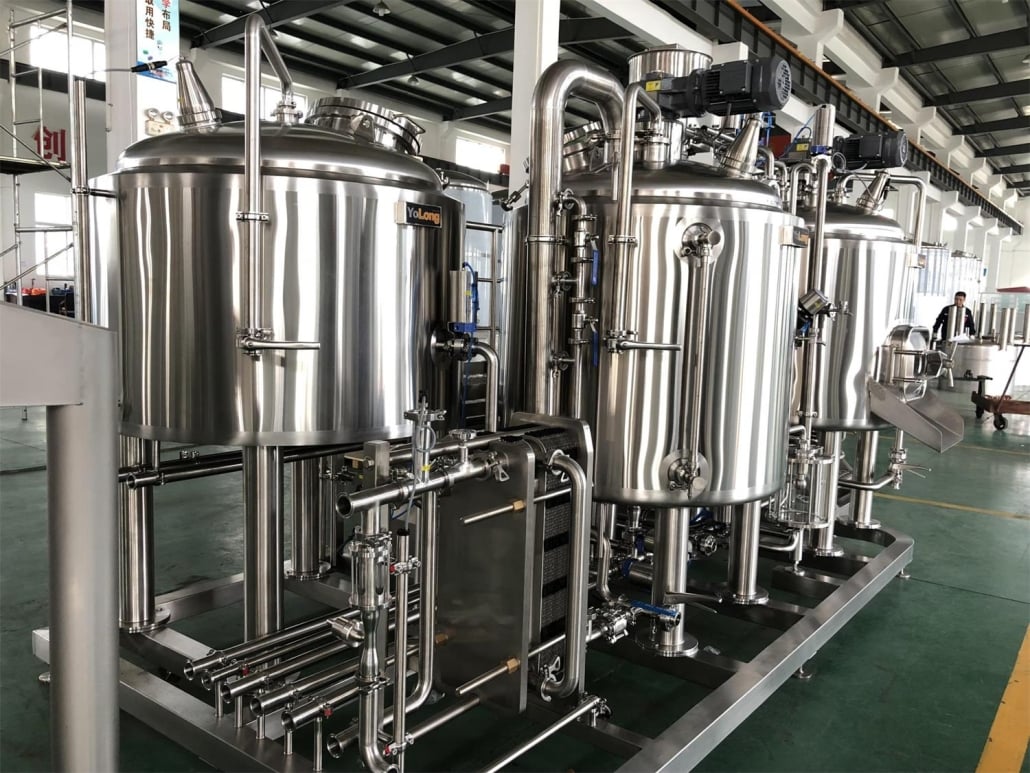
The Future of Commercial Beer Brewing Systems
As technology advances, commercial beer brewing systems will become more efficient, sustainable, and versatile. Breweries will continue to innovate, creating unique beer experiences for consumers worldwide.
Conclusion
Commercial beer brewing systems play a pivotal role in the beer industry, enabling breweries to produce large quantities of high-quality beer efficiently. From small craft breweries to large industrial facilities, these systems cater to a wide range of brewing needs. With the right selection, installation, and maintenance, breweries can achieve success in a competitive market while embracing sustainable practices for a better future.
FAQs
What is the difference between a microbrewery and an industrial brewery?
Microbreweries are smaller-scale operations, focusing on craft beer production for local markets, while industrial breweries are large-scale facilities distributing beer nationally or internationally.
How long does the brewing process take with a commercial beer brewing system?
The brewing process can take anywhere from a few weeks to several months, depending on the beer style and fermentation requirements.
Can brewpub systems be used for large-scale production?
Brewpub systems are designed for smaller-scale production, and while they can be expanded to some extent, they are not ideal for large-scale operations.
What are the most critical factors to consider when selecting a commercial beer brewing system?
Capacity, space, automation level, energy efficiency, and budget are among the essential factors to consider.
How can breweries reduce their environmental impact?
Breweries can adopt water-saving measures, explore renewable energy sources, and implement waste management and recycling strategies to reduce their environmental footprint.

